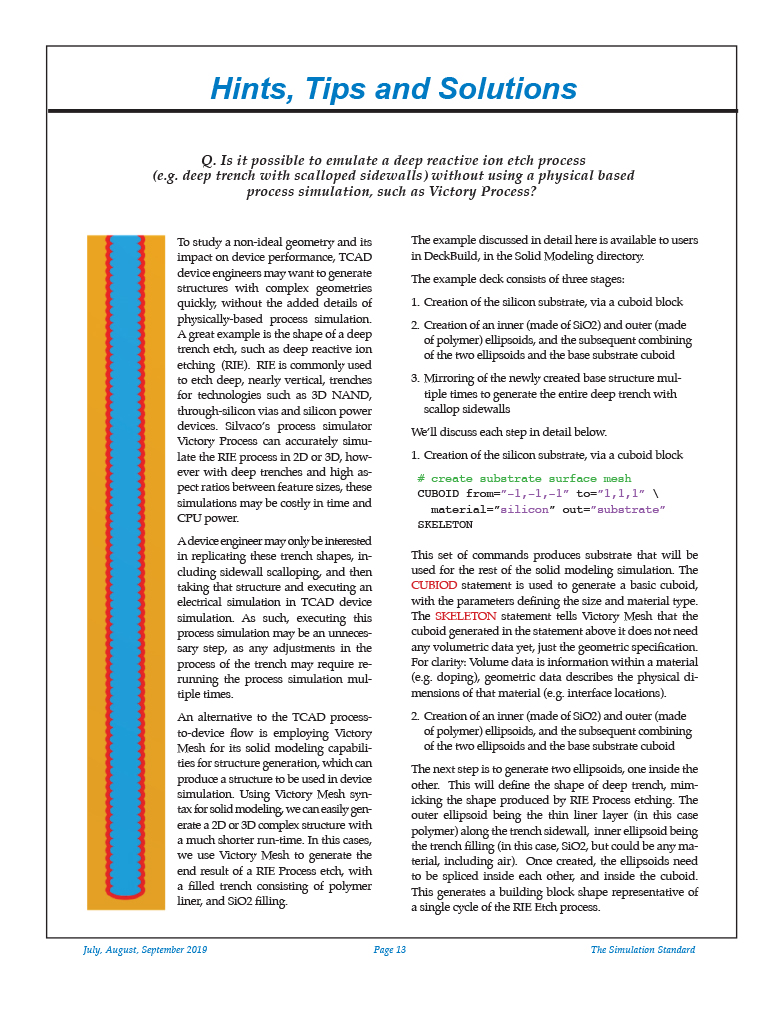Hints, Tips and Solutions
Q. Is it possible to emulate a deep reactive ion etch process (e.g. deep trench with scalloped sidewalls) without using a physical based process simulation, such as Victory Process?
To study a non-ideal geometry and its impact on device performance, TCAD device engineers may want to generate structures with complex geometries quickly, without the added details of physically-based process simulation. A great example is the shape of a deep trench etch, such as deep reactive ion etching (RIE). RIE is commonly used to etch deep, nearly vertical, trenches for technologies such as 3D NAND, through-silicon vias and silicon power devices. Silvaco’s process simulator Victory Process can accurately simulate the RIE process in 2D or 3D, however with deep trenches and high aspect ratios between feature sizes, these simulations may be costly in time and CPU power.
A device engineer may only be interested in replicating these trench shapes, including sidewall scalloping, and then taking that structure and executing an electrical simulation in TCAD device simulation. As such, executing this process simulation may be an unnecessary step, as any adjustments in the process of the trench may require re-running the process simulation multiple times.
An alternative to the TCAD process-to-device flow is employing Victory Mesh for its solid modeling capabilities for structure generation, which can produce a structure to be used in device simulation. Using Victory Mesh syntax for solid modeling, we can easily generate a 2D or 3D complex structure with a much shorter run-time. In this cases, we use Victory Mesh to generate the end result of a RIE Process etch, with a filled trench consisting of polymer liner, and SiO2 filling.



